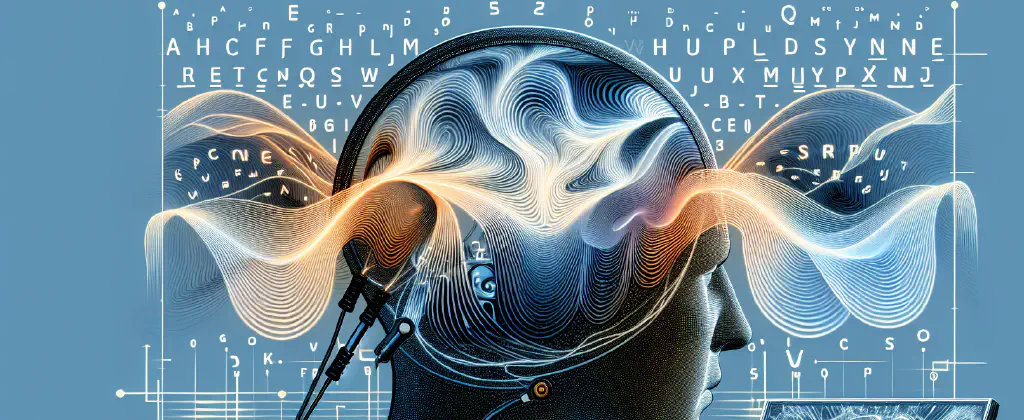18. December 2023
BrainGPT turns thoughts into text

Researchers at the University of Technology Sydney have developed a new technology called BrainGPT that can translate brain waves directly into language. The technology utilizes discrete encoding techniques to convert raw electroencephalogram (EEG) waves into text, enabling thoughts to be projected onto a screen. Unlike previous brain-to-text translation methods, BrainGPT does not require brain implants or access to an MRI machine. Instead, users need only wear a cap that records brain activity via EEG.
Overcoming Challenges in Brain-Computer Interfaces
Brain-computer interface (BCI) research has focused on helping paralyzed individuals regain communication. However, traditional EEG-based methods have limitations, such as low signal-to-noise ratios and susceptibility to interference from external sources. EEG signals are weak compared to surrounding electromagnetic interference, making reliable communication speeds challenging outside controlled environments like Faraday cages.
Implanted electrodes offer better signal quality, but they face issues such as signal degradation over time due to the build-up of scar tissue and the associated risks of brain surgery. The slow iteration cycles for testing in humans, requiring extensive government approval, further hinder progress in this area. As a result, alternative approaches like eye-tracking technology have shown promise in helping individuals with limited mobility, as they provide a more reliable means of control.
The Future of Brain-Machine Interfaces
One user in the discussion brought up Elon Musk’s Neuralink project. While some skeptics see it as a research project with exaggerated claims, others recognize its potential due to its substantial funding and resources. However, it is important not to dismiss other ongoing BCI research efforts that have made significant strides.
For instance, a Swiss-French team recently achieved success in enabling communication between the brain and legs using implanted devices. Although this represents an impressive development, it falls within the scope of existing possibilities and does not match the decoding capabilities demonstrated by BrainGPT.
Challenges and Critiques
Concerns were raised about the signal-to-noise ratio of EEG and the potential limitations associated with interpreting brain waves accurately. While BrainGPT represents a significant advancement, the accuracy of 0.4 achieved in the technology’s current state leaves room for improvement. Researchers acknowledge this and aim to enhance it to a target accuracy of 0.9 through further development.
Critics also pointed out key issues in the methodology and code of the paper. The lack of clarity regarding the distinction between model.forward() and model.generate() in the evaluation process raises doubts about the validity of the results presented. These concerns highlight the importance of rigorous peer review and the need for transparent and accessible discussions around research findings.
The Path Forward
BrainGPT and other emerging technologies in the field of brain-machine interfaces provide exciting possibilities for human-computer interaction. As these technologies progress, it is crucial to address the challenges of signal quality, noise reduction, and algorithm enhancements. Collaborative efforts between researchers, engineers, and medical professionals will drive the evolution of brain-computer interfaces into practical and reliable solutions.
While the road ahead may have its bumps, the prospect of seamlessly translating our thoughts into text opens up a world of opportunities for people with communication impairments. As advancements continue, the convergence of neuroscience, machine learning, and human-computer interaction may lead to a future where brain waves serve as a direct pathway for expression, unlocking new forms of engagement and understanding.